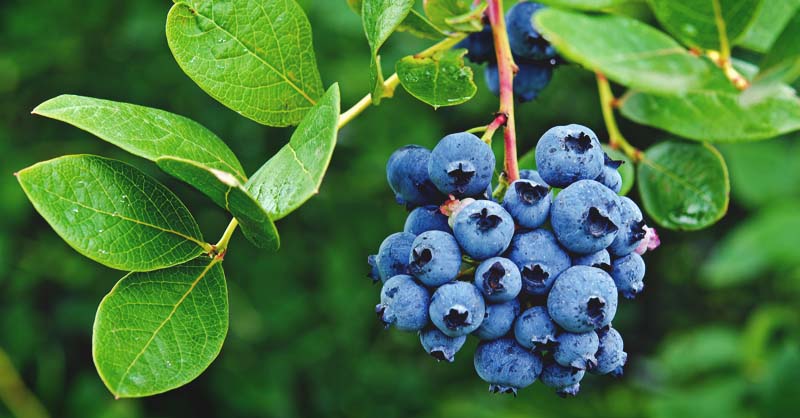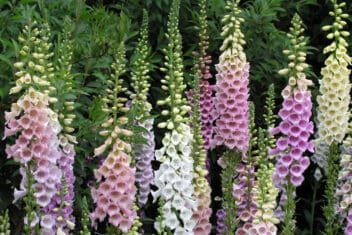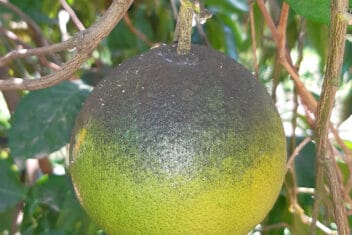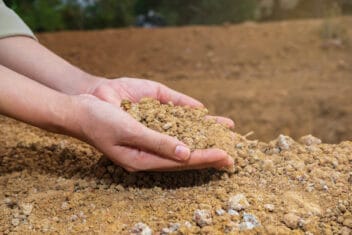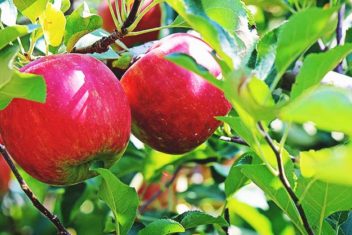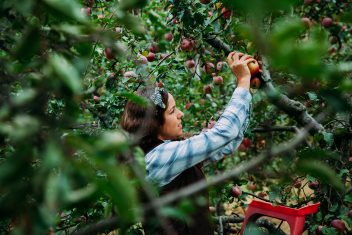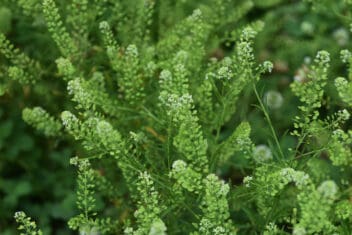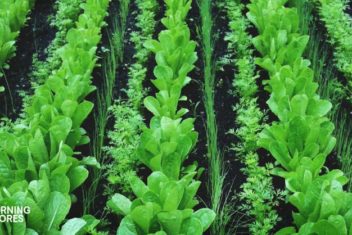Is there anything better than a warm blueberry picked right off the bush? While growing them isn’t too challenging, the one thing you can’t skimp on is pruning your blueberries. If you don’t, your plants won’t be as productive as they could be.
When I was a child, we went to Maine one summer. It was delightful spending a day crawling around picking wild blueberries on a mountain. I was hoping to see a black bear like the girl in the popular children’s book Blueberries For Sal.
I didn’t see any bears that day, but I had great fun crawling around on the ground stuffing blueberries in my mouth. As an adult, that memory brings me joy – though I don’t share the enthusiasm of crawling around picking berries with my younger self.
Today I choose to maintain my blueberries with proper pruning so that I get the biggest berries on a healthy, upright bush. While the plants take a little bit of extra effort, the results are worth it.

Why Prune Blueberries
Blueberries produce fruit on canes that are young, strong and upright, rather than on older branches on the bush. Pruning helps to maintain a good shape and size so that the plant is productive. Blueberries that are not pruned develop branches that are crowded and intertwined. This inhibits the fruit from developing.
Many people find pruning intimidating, but know that some pruning is always better than no pruning at all. Never fear, your plants will keep growing and any mistakes will be long gone.
What Tools Do You Need?
It is important to have the right tools for the job. You want them to be clean and sharp. Good tools will make a clean cut in the wood, which helps reduce stress and the instance of disease.
Hand tools such as loppers and hand pruners work well for blueberries. Smaller wood requires hand pruners and larger wood needs the bigger loopers.
How Blueberries Grow
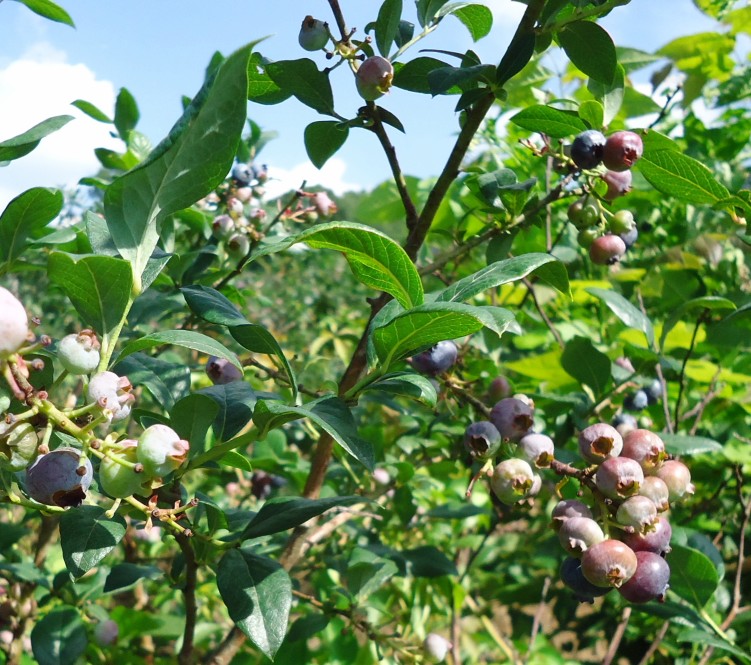
Blueberries are small bushes, typically between 2-6 feet tall. They have a unique growing habit, with shoots popping up every year from the crown, which is at the base of the plant near the soil line. These shoots grow quickly in the first couple of years and become more woody with age.
During the third year, plants begin to produce flower buds on the tips of the branches. That’s where the fruits form.
Blueberries live a long time – a whopping 40-50 years in the right conditions. Give your blueberry plants lots of sun and good air circulation to keep them healthy. Blueberries also need acidic soil with a low pH.
Training Your Young Plants
After you get your young plants established, it’s important to train them so that they’ll grow in a productive manner. The best berries grow on canes that are between 2-4 years old.
A young plant doesn’t require as vigorous pruning since there are no old canes to remove. Of course, you still want to keep an eye out for dead canes and remove those. Also, remove any low hanging or weak canes.
On younger plants, you may need to remove some of the fruit buds. Too much fruit will tax the plant and slow overall growth. It will also result in smaller fruit.
According to the Michigan State Extension Office, blueberries should have a mix of canes. Twenty percent of the canes should be one- to two-year-old shoots. The greatest percentage should be three- to six-year-old canes. You should remove twenty percent of canes that are older than six years.
Step By Step Process For Maintaining Productive Blueberry Plants
Every year, use the following steps to prune your blueberries. Prune bushes in late winter when they are still dormant. As your plants grow older you want to focus pruning to maximize fruit production by giving the best canes plenty of room.
Mature bushes have a mix of younger and older canes. You want to start by taking a good look at your blueberry bush. Note how it is growing. Are the canes going upward or are they drooping to the side? Are the canes green or brown? Then visualize what the plant should look like and get started on pruning your blueberries.
- Pick out the strongest canes that have the best flower buds. Mark them with tape or string, because you want to save them.
- Remove canes that are dead, diseased or broken.
- Remove any canes that are six years old or older, even if they have flower buds on them.
- Next, take off any weak or spindly looking canes.
Every few years, you’ll want to go a step further and prune everything back to rejuvenate the bushes.
Pruning Goals
While it might not seem like it at first, visualizing what you want your plant to look like is one of the most important steps. I’ve found that I am less likely to make pruning mistakes if I think about how I want the plant to look when I am finished.
Your end result should be a plant that is narrow at the base and has an open center. Much like a small apple tree.
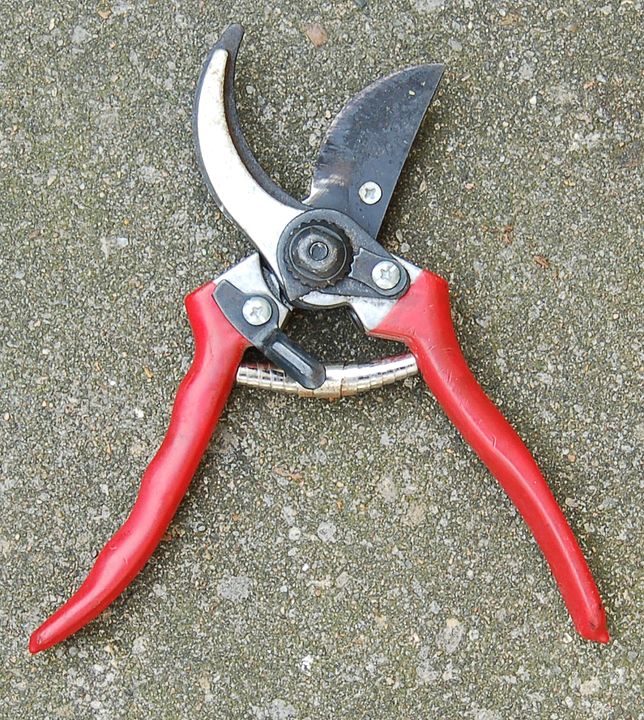
Remember, the goal with pruning is to give the center of the bush plenty of sunshine and air circulation.
Pruning and Blueberry Varieties
There are three main types of blueberries and within each type there are many different cultivars. Since most blueberries need a friend of a different variety to reproduce, you’ll probably have several different varieties.
You should know what variety each one of your plants is. This will help you with pruning, since each type requires some special tricks.
Low Bush
Low bush berries are those wonderful berries of my youth. They’re the wild berries that grow in northern states. They’re short and sprawling, rarely growing taller than two feet. They are extremely hardy and grow in zones 2-6. The small berries are packed with flavor.
It’s common to prune low bush blueberries by mowing or burning. This is because growth is spread by underground rhizomes, so the object is to remove as much stem as possible. This makes the crop biannual, as the first year after mowing or burning the plant will only have vegetative growth.
You can go this route for pruning your low bush blueberries, or you can take a more considered approach like the process detailed above.
Rabbiteye
Rabbiteye blueberries are more common in the southern United States. They are smaller and more heat tolerant than high bush blueberries.
When you’re pruning these blueberries, remove flower buds the first year and allow for leaf growth. You should also prune off old canes to 6-12 inches tall. This will force new canes to develop from the base of the plant.
High Bush
High bush varieties are tall, and the ones we often think of when picturing blueberry plants. This is the kind you’ll come across at most U-Pick blueberry farms. Although they belong to the same group, some of the more popular types have different growth patterns from one another.
For instance, Duke has upright canes that don’t produce many shoots from the crown. The canes on a Blue Ray variety grow tall and then arch, so they often benefit from thinning on the top. Nelson produces shoots that come from the crown. In this case, your thinning will originate down by the base of the plant.
Revitalize Older, Overgrown Bushes
Many times we inherit an older plant that hasn’t been taken care of properly. These bushes are overgrown with canes that are dead and tangled together. As a result, they’re probably not producing much fruit.
Don’t worry, with a little tender lovin’ care these bushes can once again become productive.
The first step is to remove the dead and diseased branches. This will allow for better airflow. Then, concentrate on removing canes from the crown near the ground, giving young canes the opportunity to grow. Finally, remove any branches that are crossing each other.
In addition, check the pH around the plants to make sure your blueberries are growing in acid soil. If the soil has become alkaline you can make adjustments by adding cottonseed meal and sulfur to the soil.
Reviving Sad-Looking Plants
If your blueberry bushes look especially bad, you can use a rejuvenation technique to bring them back to life. This is similar to what the low bush growers do when burning fields. Don’t worry, it’s dead simple.
Cut your blueberries back to the crown by removing all canes. You can do this with a mower or a pair of sharp loopers. After you cut the bush back, give it some organic fertilizer or spread compost around the base. This will allow the plant to produce new growth in the coming year.
The Bottom Line on Pruning Blueberries
Pruning is an essential part of growing any fruit crop. Pruning is something that happens naturally in wild plants. Browsing animals such as deer “prune” bushes in the woods. Since that doesn’t happen in the garden, it’s your job to get it done.
Pruning encourages the healthy growth of the blueberry bush. It also increases fruit yield. Agricultural scientists have developed the best methods for pruning blueberries to benefit the plants. By following these instructions, you’re giving your plants what they need to produce a top-notch blueberry crop.

